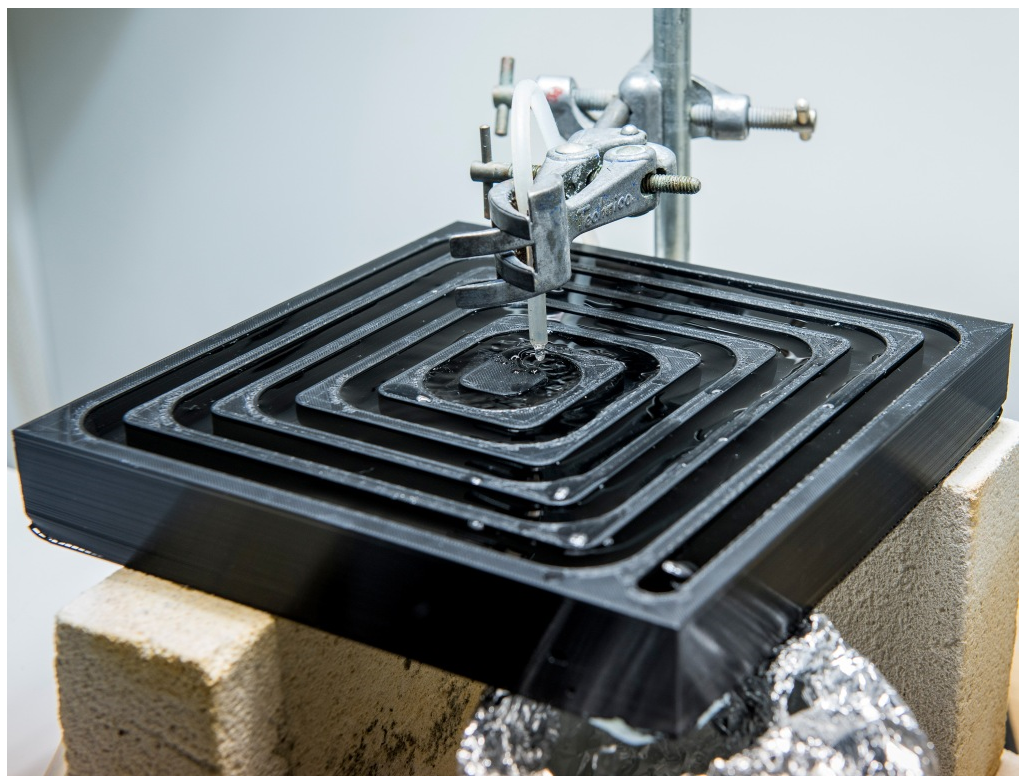A MULTIDISCIPLINARY team at the University of Bath, UK, is developing a new portable, cheap and efficient device to treat contaminated drinking water for poor communities in the developing world.
The device, designed for household use, is the brainchild of Bath chemical engineer Emma Emanuelsson. She was inspired by the SODIS (SOlar DISinfection) bottle, a PET bottle which uses the heat and UV from sunlight to kill microbes in the water. While cheap and simple, the efficacy of SODIS bottles is dependent on the conditions, and is only a short-term solution as the bottles are not very durable. Emanuelsson set out to develop a more durable solution based on disinfection through heat and UV, in something that began as a “hobby project” with a couple of undergraduates.
“My key motivating factor as an academic has always been just being able to make an impact on people’s everyday life,” said Emanuelsson, adding: “All of a sudden, the UK Research Council launched the Global Challenges Research Fund, taking some of the aid budget and directing it into research that will benefit third world countries. All of a sudden, my pet hobby project, which I thought would never be funded, suddenly became fundable!”
Seed funding from the University of Bath allowed Emanuelsson to hire a postdoctoral student to begin serious work on the device. The research team includes collaborators from Bath’s departments of civil engineering, mathematical sciences and social and policy sciences.
The main part of the device is a slab, created from black plastic, with channels running across the surface. The water runs into the channels and the black plastic heats up in the sun, heating the water to temperatures that kill the bacteria, while it is also exposed to the sun’s UV rays. Making this slab as effective as possible has involved the expertise of many.
Firstly, mathematical modelling determines the time it takes for water to pass through the devices, before digital designers in the civil engineering department develop the most suitable designs. 3D printing is then used to produce prototypes.
“The 3D printing allows us to rapidly produce different prototypes so we can see which one works best. Every prototype will have an issue with it. That’s the benefit of 3D printing, to rapidly generate something, test it, see what we get, use these results and then print another one,” said Emanuelsson.
The next prototype will be twice the size (40 cm x 40 cm) of previous ones, with slightly deeper channels, more curved corners and some small devices to create a bit of turbulence and mixing in the flow. It is a fine balance, however, to ensure that sunlight can still penetrate all the way through the water. The first big prototype will be ready later in the month, which will give the researchers a better idea of how much water each device will be able to treat, although they expect this to be around 35 l/d.
The final device will not be 3D printed, as this is not practical for mass production. Emanuelsson is working with materials science expert Paul Shepherd in the civil engineering department to identify the best materials for the job, which will be stable and durable for long periods of time, and techniques for mass production.
Sunlight in the UK is rarely strong enough to test such a device, so the testing with model contaminated water so far has been carried out in the laboratory, using a bespoke artificial sunlight lamp created by Swedish company Suntech, which started out making lamps for Volvo to test the durability of the paintwork of its cars. Here, the chemical engineering expertise comes into play to assess the effects of different conditions such as temperature, light intensity and water turbidity.
The complete system, as envisaged at present, was developed with the help of Aurelie Charles, a lecturer in Bath’s social and policy sciences department. Charles has worked in Malawi and one of her Malawian contacts advised on local conditions and materials. In use, Emanuelsson says that the idea is to have a bucket, mounted on the wall of a house, which will be filled with contaminated water. A tube will run from this to take the water to the slab. The water will flow through this into a second collecting bucket.
It is hoped that the device will cost just £5 (US$6.4) per unit and weigh around 3 kg. Ideally, Emanuelsson would like to see the device made locally by trained workers. Charles has found in her research that if the local community is involved in the production of a product like this, it is more readily accepted. She is now putting in grant applications to test different ways to implement the technology and get it to market.
“This is why collaborations are so great. In terms of having a multidisciplinary project, in terms of expertise, we are completely complementary. I could never do what social sciences are doing, I couldn’t do what Paul’s doing. I think this is one of the reasons this project works so well, because we are all taking it forward as a team better than any of us could have done individually,” said Emanuelsson.





